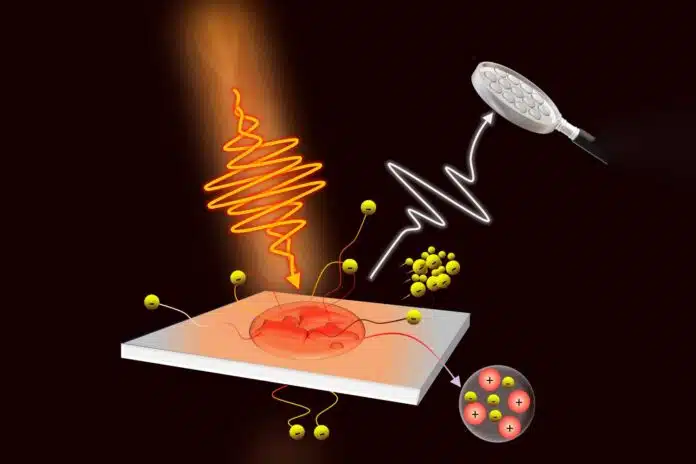
By Pranjal Mehar 7 Aug, 2024
Collected at: https://www.techexplorist.com/method-measure-ultrahigh-power-ultrashort-laser-pulses/86966/
Lasers produce the shortest-duration pulses. They also offer a means to pack abounding light energy into that concise duration, leading to astronomically considerable ‘peak’ powers.
The Tata Institute of Fundamental Research (TIFR) in Mumbai has developed an advanced method for measuring ultrahigh-power and ultrashort laser pulses in a detailed and thorough manner.
Measuring the exact shape of short pulses is quite challenging. Even though scientists have developed smart methods over the years, there are still major problems. One big issue is that when these pulses pass through a material, they get distorted in time. This distortion gets worse with higher power levels.
Another limitation is that the pulse time profile differs at different points within the laser beam. Scientists often don’t concern themselves with these variations across the beam’s spatial extent and assume a single temporal profile. As the beam size increases or it travels a longer distance through a medium, these time distortions become more severe and can significantly alter the pulse. For beams with extremely high peak powers, measuring the time duration at different points across the beam is crucial to fully understanding these changes.
For this study, the team used a specially designed instrument to measure the time profiles across spatial points in the ultrashort laser beam. Using a technique called ‘spectral interferometry’ at different spatial locations across the beam simultaneously.
As the scientific community pushes towards peak laser powers in the tens of thousands of trillion watts and with laser beams spanning several tens of centimeters in diameter, this method will be useful and essential for accurate measurement and control.
Another boost for the method includes pulse-emitting ultrahigh power lasers once in a while – once over many seconds/ minutes/ hours. Previous techniques require sampling multiple pulses before estimating the pulse profile, which will be extremely cumbersome. This new technique solved this problem, too- it works for a single pulse!
As laser peak powers soar, traditional solid optical components can’t handle extreme conditions and break down due to ionization. To address this, technology is shifting towards using ionized matter, or ‘plasma,’ to create optical components that can withstand these powerful lasers.
A one-shot solution for all ultrahigh peak power lasers?
Scientists noted, “The technology is therefore moving towards using ionized matter or ‘plasma’ itself, to design these optical components. These plasmas can be highly unstable and cause further distortions in the spatiotemporal profiles of the pulse incident on them. The TIFR method is perfectly suited to measure these distortions.”
Journal Reference:
- Ankit Dulat, Amit D. Lad, C. Aparajit, Anandam Choudhary et al. Single-shot, spatio-temporal analysis of relativistic plasma optics. Optica. DOI: 10.1364/OPTICA.522870

Leave a Reply